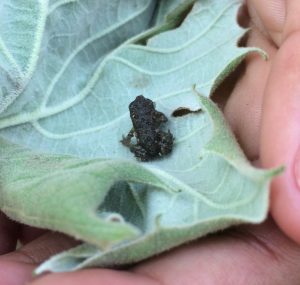Recap of The Amphibians of Chicago presented by Joey Cavataio
Joey Cavataio condensed many years of experience and research into a beautifully presented talk for us on Feb 25. Along with the lovely images of our area’s amphibians, another welcome sight was the many middle-schoolers who were attending for an extra credit assignment from their science teachers. They were truly engaged and asked questions that reflected real care and attention. Joey was impressed with them!
- Bullfrogs and Tiger Salamanders are very secure in their population statuses; they are fairly large and voracious.
- Amphibians like our Spring Peepers and Blue-spotted Salamanders have what is called “site fidelity,” meaning they will only reproduce at a specific vernal pool.
- Vernal pools are incredibly important yet very fragile and subject to variations in climate and changes in hydrology, often caused by humans (draining sites, etc).
- Invasive species such as Phragmites and Buckthorn are huge problems for our native amphibians
- Loss of emergent vegetation along waterways is also problematic–loss of cover and food
- Some species are close to extirpation (loss of a population to an area, local extinction). One such species is the Smallmouth Salamander which lives in only pond in one area.

- The Blanchard Cricket Frog (which many have not even heard of) was once the most common frog in the region but is now almost gone.
- Amphibians are very sensitive to road salts.
- Amphibians are important for mosquito control.
- There are some efforts to restore amphibian populations through the release of eggs because of site fidelity. Many amphibians return to reproduce where they were born. Releasing adults means they would go in search of their natal vernal ponds.
- We have a beautiful salamander called the Blue-spotted Salamander
Top 7 Actions We Can Take from Joe Cavataio:
1) If possible, avoid rock salt (sodium chloride) during winter. There are a number of safer alternatives. For example, Des Plaines uses, or recently used, a beet juice/calcium chloride blend (keep in mind this was municipal, not just resident) in addition to rock salt in order to drastically reduce the amount of rock salt they used. There are many other chemical-based options that, when used responsibly, are safer for the environment than salt. And of course, some opt for non-chemical alternatives like sand or cat litter. Pesticides can cause problems too, as amphibians feed on insects & other invertebrates. Use conservatively & responsibly.
2) Support habitat restoration – probably the best way citizens can make a difference. European Buckthorn releases a chemical called emodin, which interferes with amphibian embryo development. An interesting study was conducted in part by Dr. Allison Sacerdote-Velat a few years ago – the abstract is here: Study Abstract
3) Do not translocate (move from one location to another) amphibians. The risk of disease transmission is higher than ever. The only time it should ever be carried out would be by experienced & permitted biologists. Under this category would include the addition of bullfrog tadpoles to ornamental ponds. These tadpoles are often sold at garden stores. And though not as common a practice as it once was, some bait shops sell tiger salamander larvae (often called “waterdogs”) to be used as fishing bait. These larvae are often collected from western states and represent a whole separate genetic background. When these escape or are released, they compete directly and indirectly with both native tiger salamanders as well as other species of amphibian.
4) Get involved with a calling frog survey – the primary one in these parts is managed by Dr. Allison Sacerdote-Velat with the Peggy Notebaert Nature Museum. The training courses for this season are underway but anyone interested can check out the website (http://frogsurvey.org/) as well as their Facebook page, and sign up for next season’s training courses. It’s a ton of fun and the data collected goes a long way toward managing habitat and understanding species distributions.
5) Discourage collection/purchase of wild amphibians & report violators to the Illinois Department of Natural Resources. Poaching of amphibians can remove a site’s entire population, particularly of more vulnerable species.
6) Cultivate native plants on your own property. It’s especially helpful if you live near a preserve. Amphibians won’t typically abandon good habitat and traverse hostile landscapes (i.e. roads) to set up shop in a yard just because that yard could support it (though as I experienced as a little kid, sometimes they do…). But, if you’re close enough, you may just have a great opportunity to expand a frog’s choice of habitat!
7.) Learn about our amphibians. Here’s a really, really cool field guide just released by the Field Museum. It’s a great way to help people identify common amphibian eggs and larvae. And it’s specific to the Chicago region. Plus, it’s printable! http://fieldguides.fieldmuseum.org/sites/default/files/rapid-color-guides-pdfs/906_usa_amphibians_of_the_chicago_region.pdf
